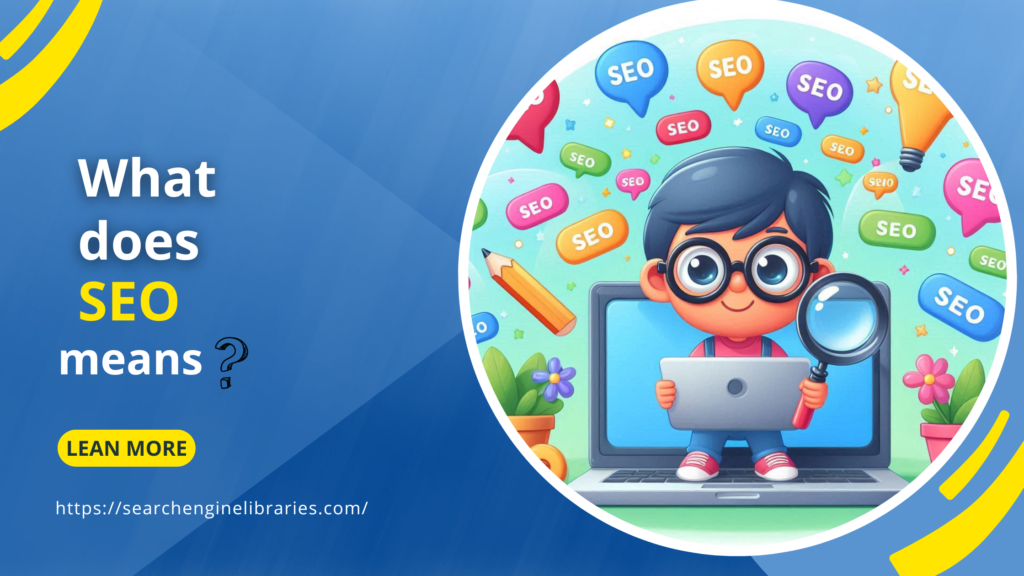SEO, or Search Engine Optimization, is one of the most critical aspects of digital marketing today. It’s the practice of optimizing your website to increase its visibility in search engine results pages (SERPs) like Google, Bing, and Yahoo. The better your site’s visibility in search results, the more likely you are to attract attention and drive traffic to your website, leading to potential customers or clients.
Understanding SEO
At its core, SEO is about making your website more attractive to search engines. When people search for information, products, or services online, they typically don’t look beyond the first page of search results. This means that if your website isn’t ranking on that first page, you’re missing out on a massive amount of potential traffic.
SEO is not just one thing—it’s a combination of strategies and techniques aimed at improving your site’s ranking. These can be broadly categorized into on-page SEO and off-page SEO.
On-Page SEO
On-page SEO refers to the optimization of elements on your website. These include:
- Keyword Research and Optimization: Keywords are the phrases that people type into search engines. Finding the right keywords to target is crucial. Once identified, these keywords should be strategically placed in your content, headers, meta descriptions, and URLs.
- Content Quality: Search engines prioritize high-quality, relevant content. Your content should be informative, engaging, and tailored to the needs of your audience. It should also be original and updated regularly to reflect current trends and information.
- Meta Tags: Meta titles and descriptions help search engines understand the content of your pages. These should be concise, relevant, and include your targeted keywords.
- URL Structure: Clean, descriptive URLs that include keywords can improve your SEO. Avoid complex strings of numbers and characters—simplicity is key.
- Internal Linking: Linking to other relevant pages within your website can help search engines crawl your site more effectively and encourage visitors to spend more time exploring your content.
- Mobile Optimization: With the increasing use of smartphones, ensuring your website is mobile-friendly is essential. Google uses mobile-first indexing, meaning it predominantly uses the mobile version of the content for indexing and ranking.
- Page Speed: Faster-loading pages provide a better user experience and are favored by search engines. Tools like Google PageSpeed Insights can help you assess and improve your page speed.
Off-Page SEO
Off-page SEO focuses on increasing the authority and trustworthiness of your website through external means. This includes:
- Backlinks: One of the most critical factors in SEO, backlinks are links from other websites to your site. High-quality backlinks from reputable sites act as endorsements for your content, signaling to search engines that your website is a reliable source of information.
- Social Media Engagement: While social media signals are not a direct ranking factor, they play an indirect role. Engaging content shared on social media can drive traffic to your site and increase the likelihood of earning backlinks.
- Guest Blogging: Writing articles for other reputable websites in your industry can also generate backlinks and drive traffic to your site.
- Local SEO: For businesses with a physical presence, local SEO is crucial. This includes optimizing your Google My Business profile, getting positive customer reviews, and ensuring your name, address, and phone number (NAP) are consistent across all online platforms.
Why Is SEO Important?
In a digital age where the majority of consumer journeys begin with an online search, SEO is not just an option; it’s a necessity. Here’s why:
- Increased Visibility: SEO helps your website appear in front of people searching for your products or services. The higher you rank, the more visibility you gain.
- Credibility and Trust: Websites that rank well in search engines are often perceived as more credible and trustworthy by users. This can lead to higher conversion rates.
- Cost-Effective Marketing: Compared to paid advertising, SEO is cost-effective. While it does require an investment of time and resources, the long-term benefits can far outweigh the initial costs.
- Better User Experience: SEO is not just about search engines; it’s also about improving the user experience. A well-optimized website is easy to navigate, loads quickly, and provides valuable content—all of which contribute to a positive experience for your visitors.
Conclusion
SEO is a powerful tool in the digital marketing arsenal. By understanding and implementing both on-page and off-page SEO strategies, you can improve your website’s visibility, attract more traffic, and ultimately, grow your business. Remember, SEO is not a one-time effort but an ongoing process that requires regular updates and adjustments to keep up with search engine algorithms and market trends. Investing in SEO is investing in the long-term success of your online presence.

